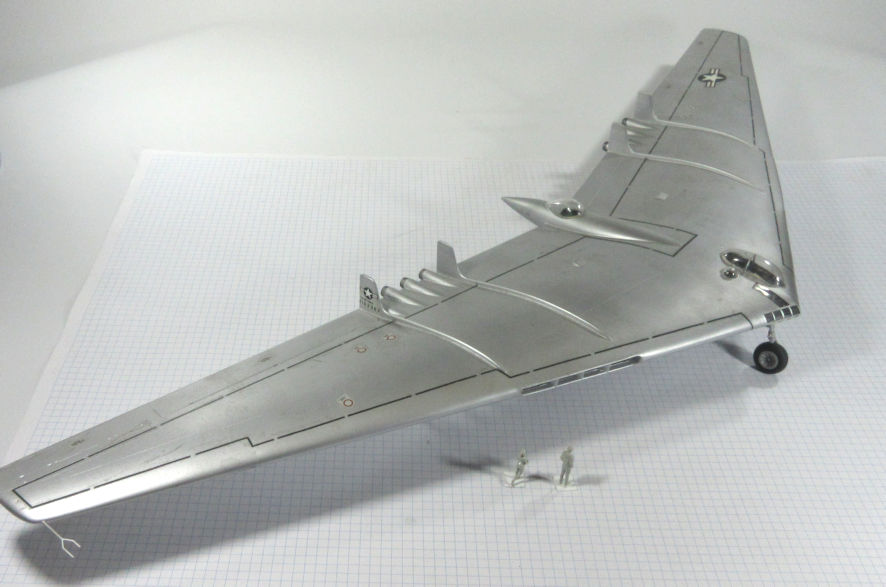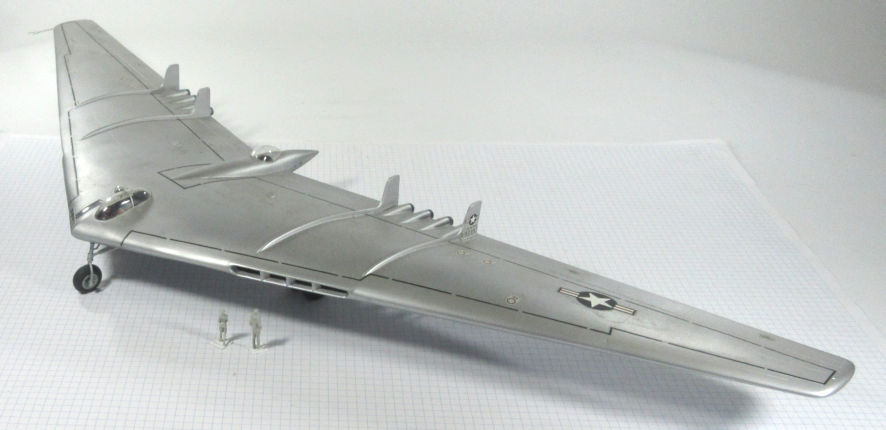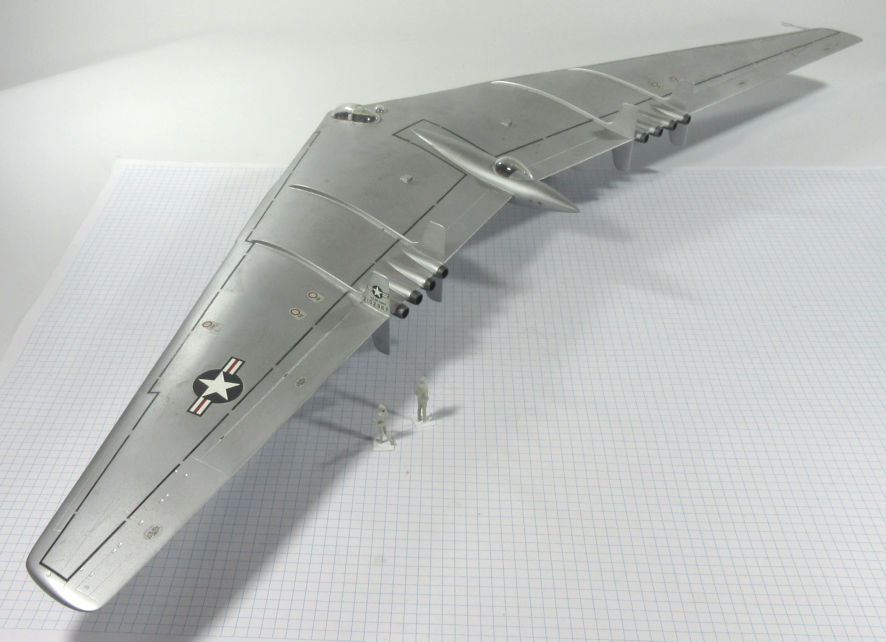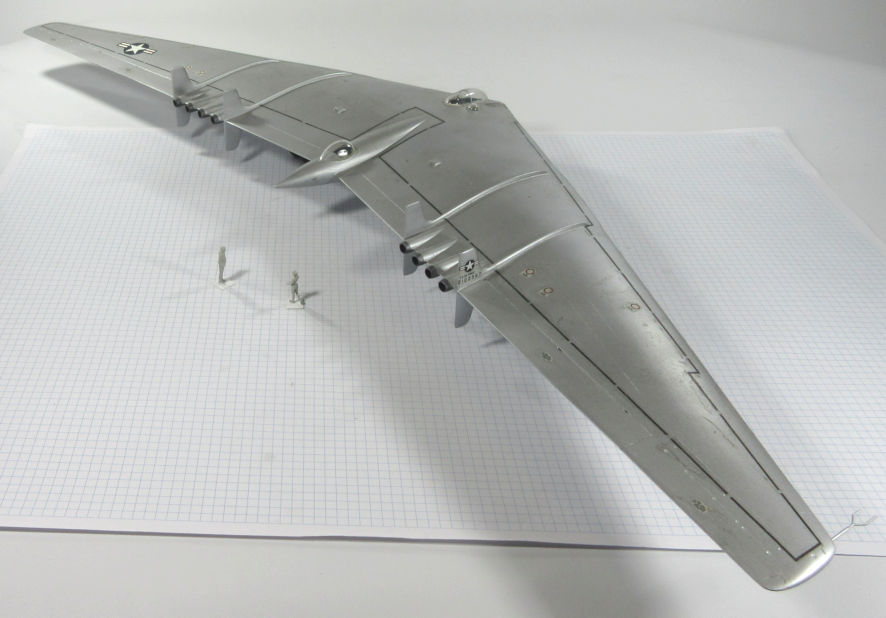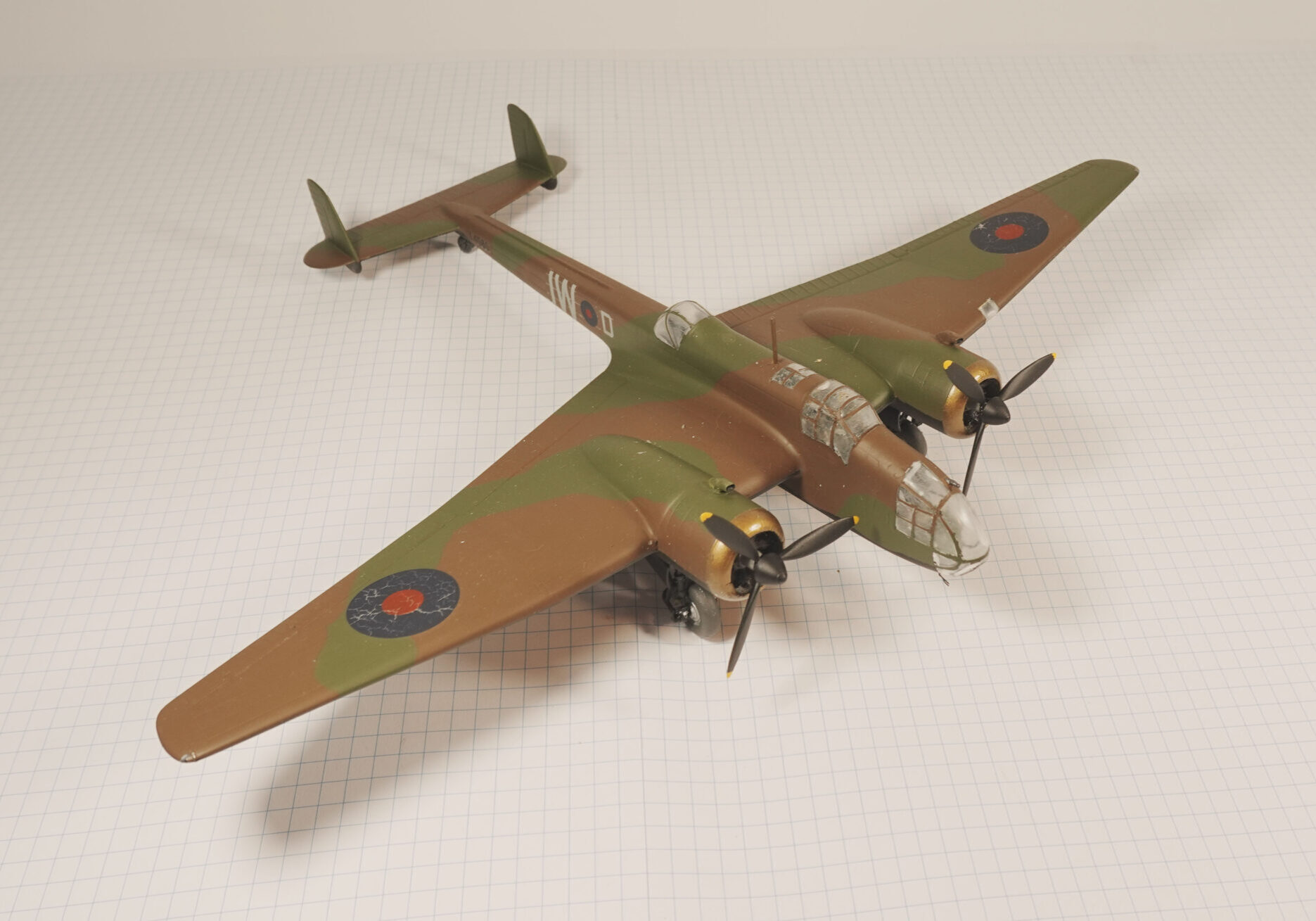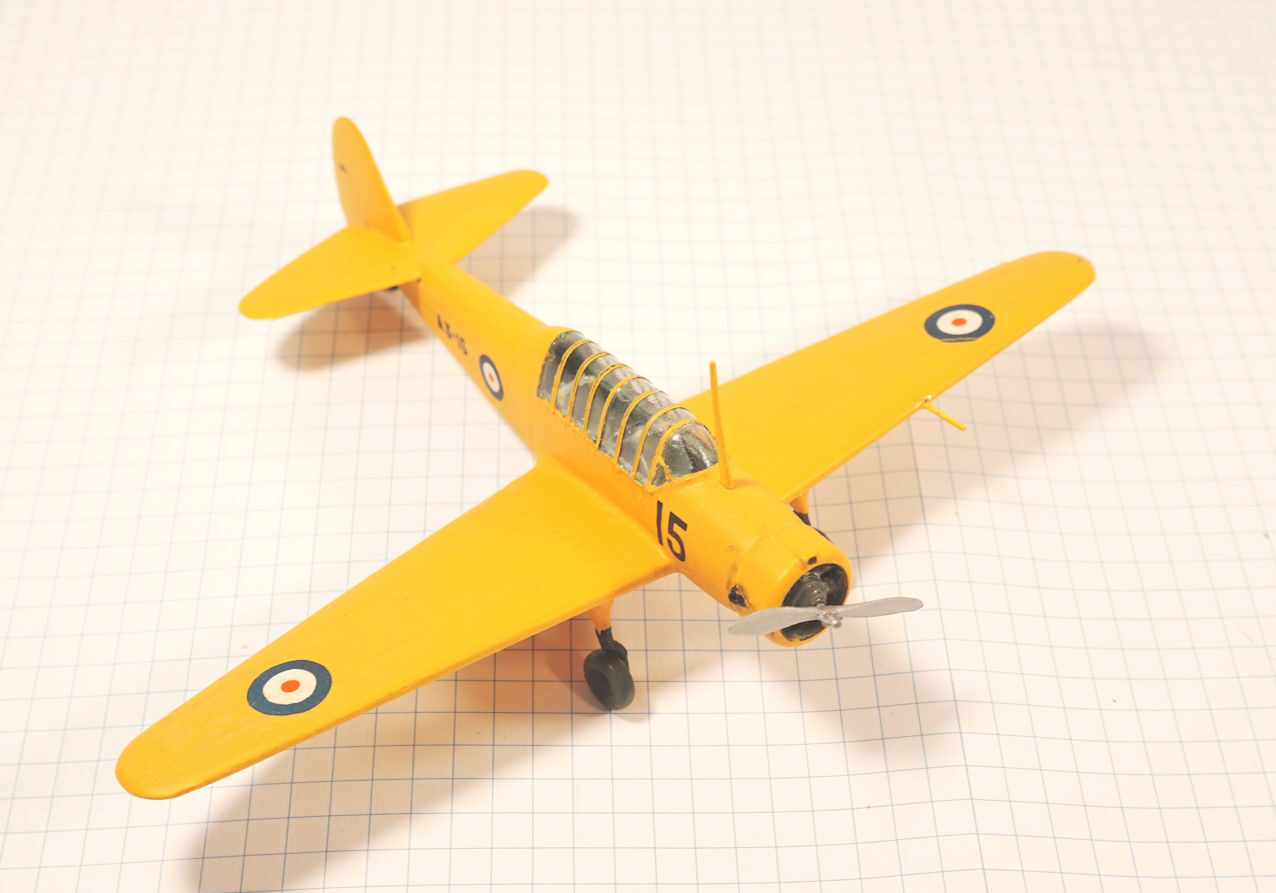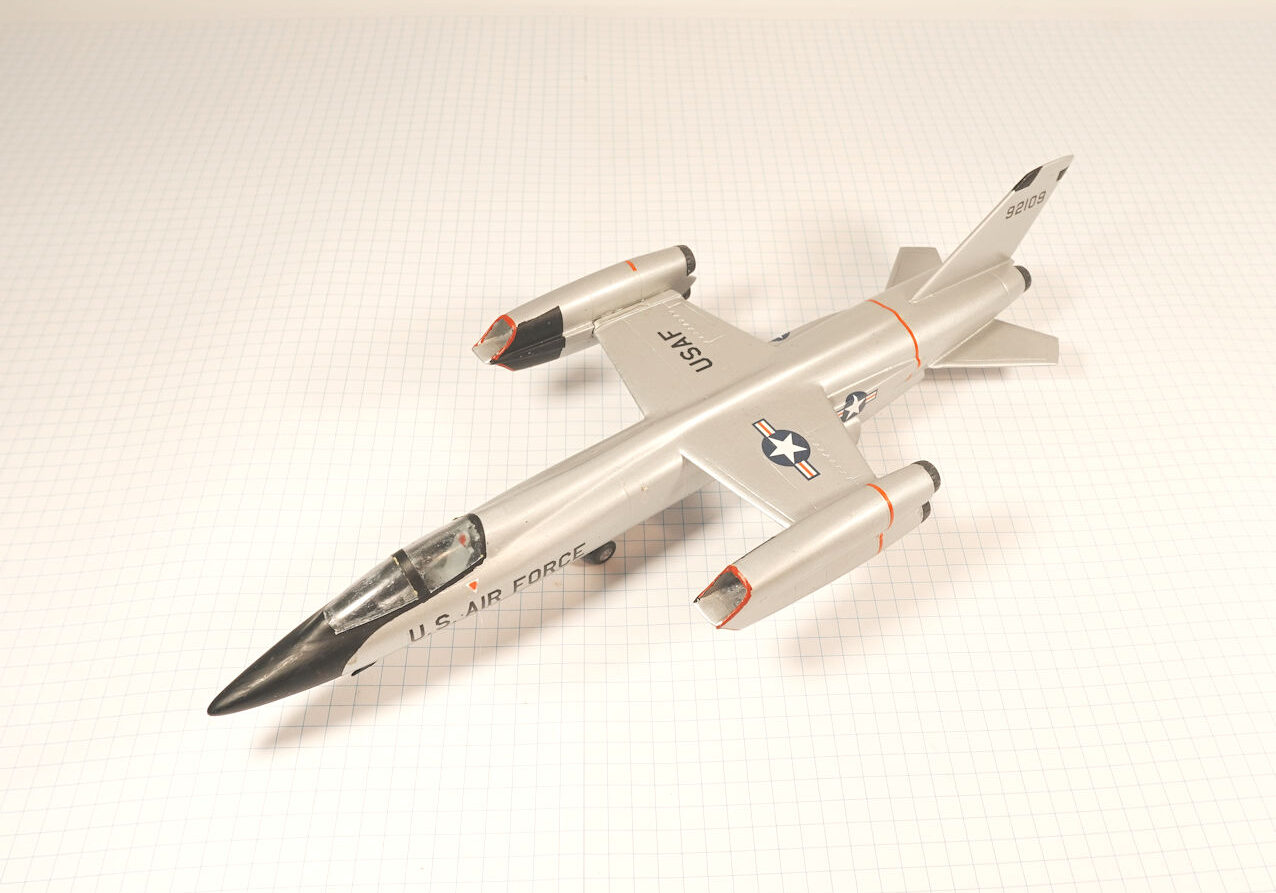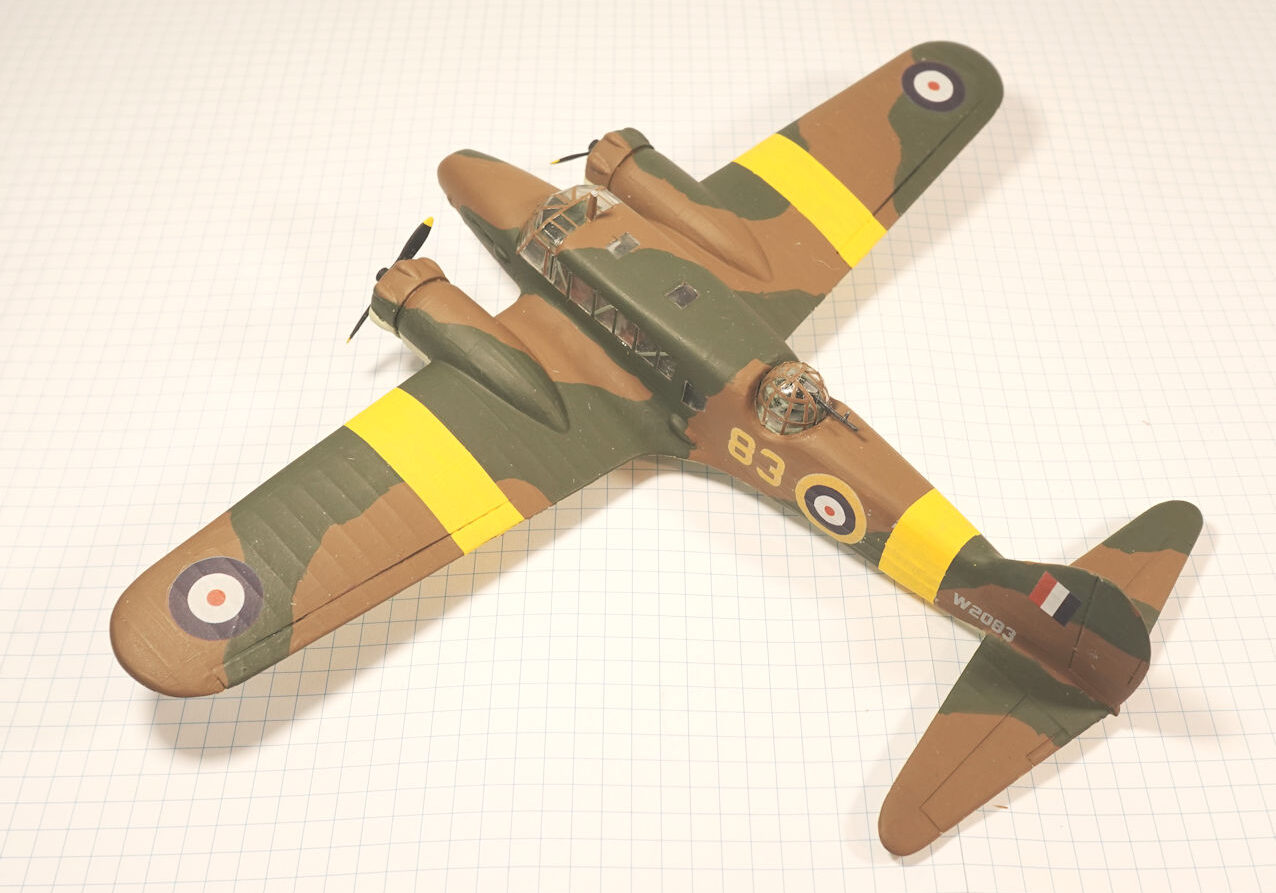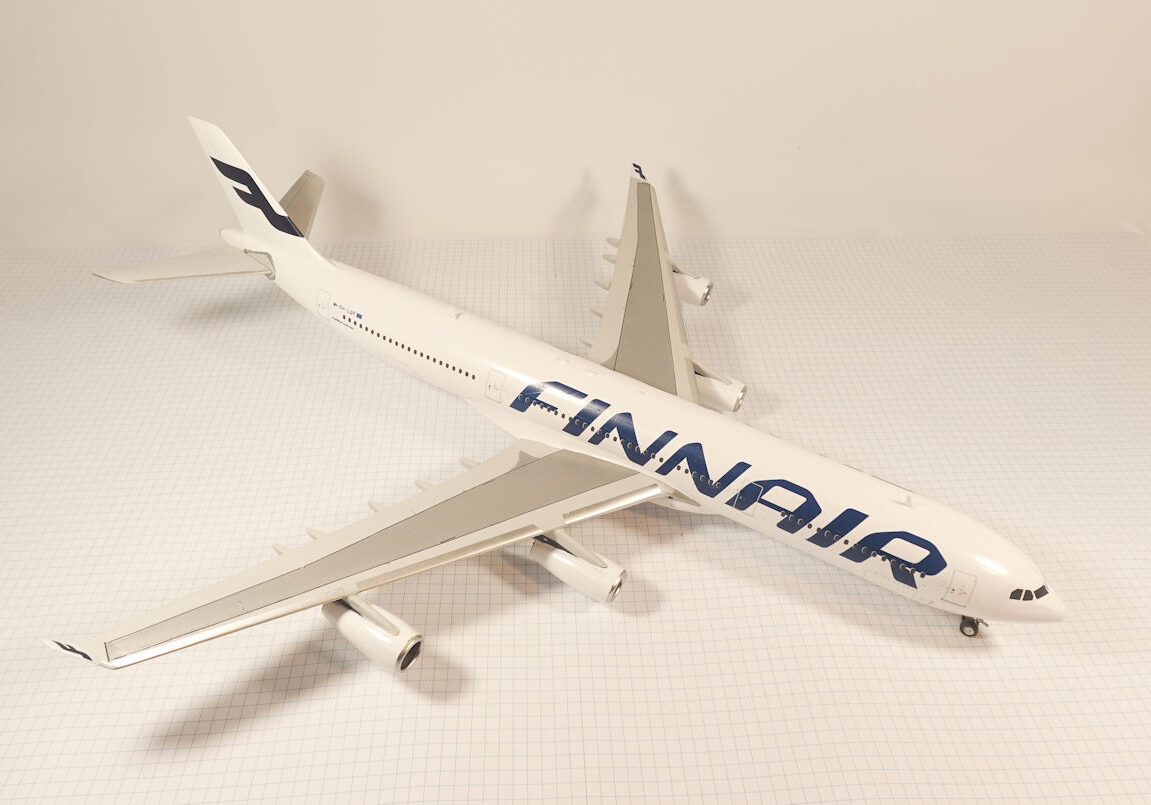History
The Northrop YB-49 was developed in an attempt to produce the most aerodynamically efficient aeroplane possible.
Although it had many advantages the design also had significant defects and never entered production.
Jack Northrop began developing flying wings in the 1920s and, by 1940, the concept was sufficiently advanced that the US Air Force ordered the XB-35, a huge flying wing bomber that made its first flight in 1946.
By then jet engines were replacing piston engines and two XB-35s were converted into jet powered bombers called YB-49s.
The first YB-49 flew on 21 October 1947 and received many complimentary reports.
However the second prototype crashed in June 1948 and the authorities gradually lost interest in the project.
The other YB-49 was destroyed in an accident in March 1950 and the project was abandoned.
This model represents a prototype.
AMT 1/72 kit completed by Leigh Edmonds in March 2002.




